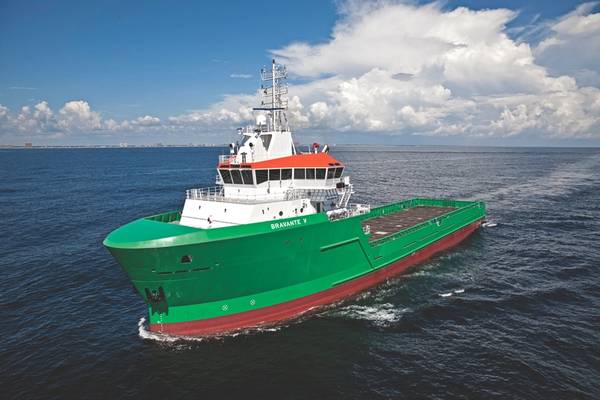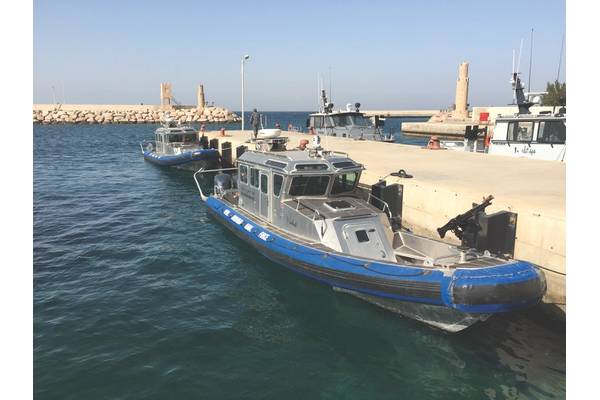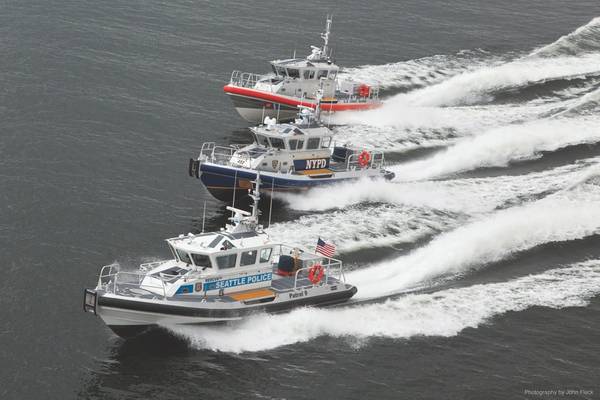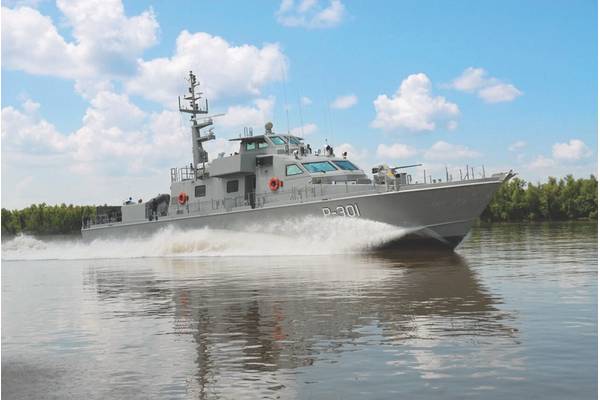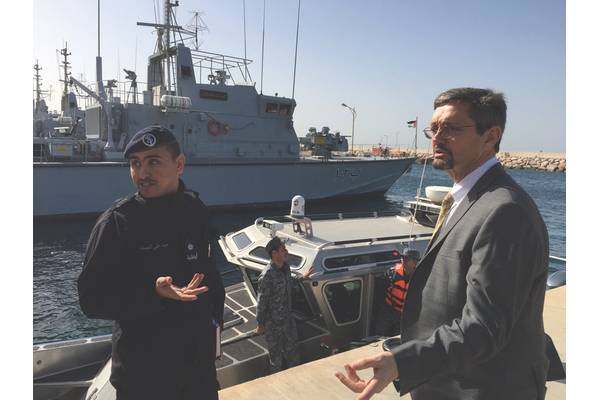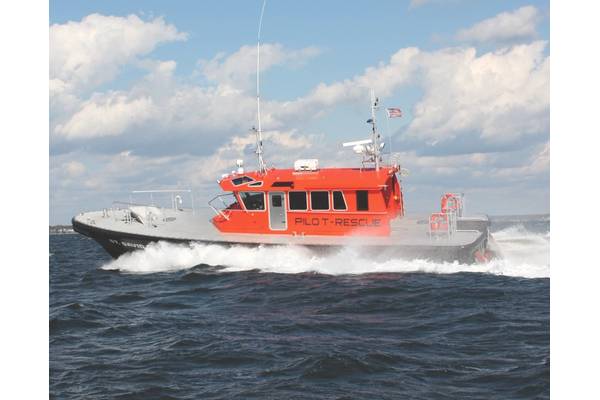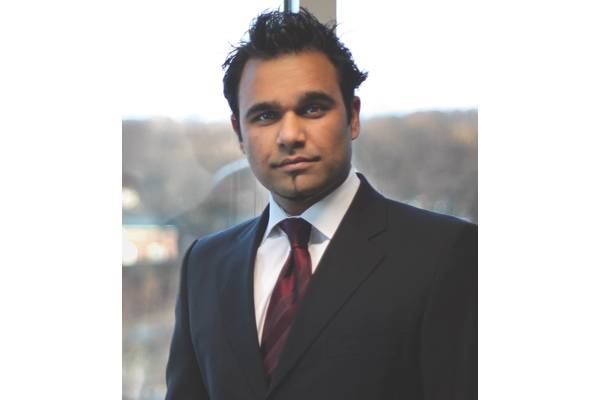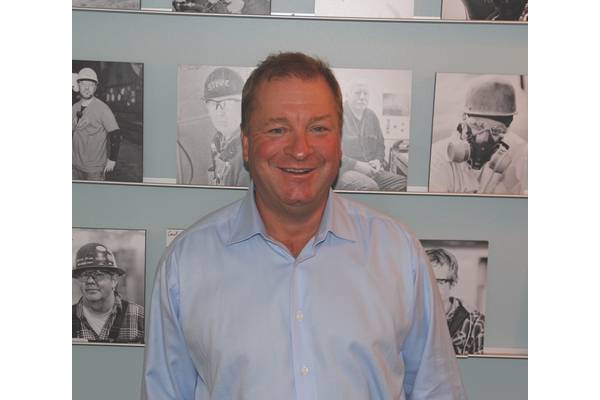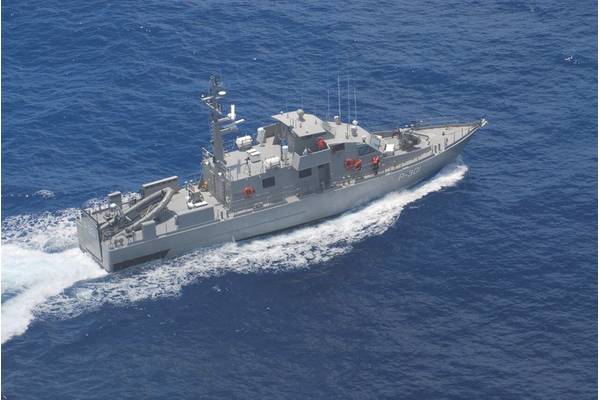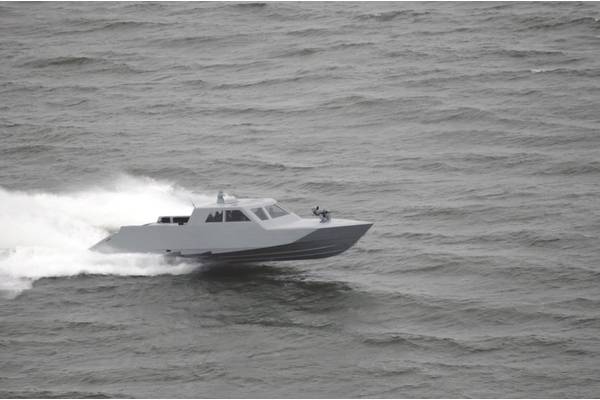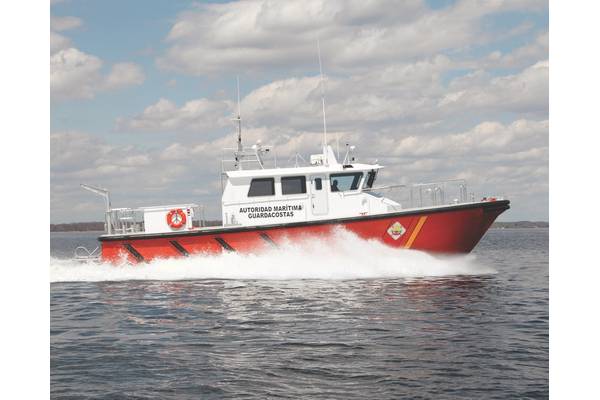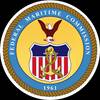Market conditions dampen some future prospects, but domestic yards have proven that they can compete overseas, and will do so again when the time is right.
These are ‘interesting’ times for U.S. shipbuilders. The tail end of one of the biggest boom cycles seen in the last 50 years also finds some builders at the pointy end of once-fat backorder books and searching for new sources of business. This point in the cycle, however, also provides ample proof that U.S. yards can do more than produce expensive blue water Jones Act hulls for the domestic markets. Looking overseas for new opportunities has many yards demonstrating that the domestic builder can and does compete overseas in certain niche markets – on price, quality and speed of delivery.
The dozens of U.S. ship and boat builders are as vibrant as they are diverse – building vessels for a range of military and commercial applications. For example, data from the U.S. Maritime Administration (MARAD) shows that U.S. exports of small vessels have been valued at between $2.0 and $3.5 billion in recent years. Parsing the numbers shows that pleasure-craft (including yachts) have been the largest component, but the trend has legs in other sectors, as well. The statistic is deceiving, since it includes re-exports of expensive super-yachts which visit areas like Fort Lauderdale in the winter. Nevertheless, commercial and military vessel sales have held above the $1.5 Billion mark during the past five years. There are indications that this trend will continue.
Versatile History
U.S. yards, many located along the U.S. Gulf Coast and in the Pacific Northwest, are versatile. Indeed, one recent merger saw a large operator of offshore service vessels, Harvey Gulf International Marine, purchasing two yards from the Gulf Coast Shipyard Group tied to the yachting business. One of the yards, in Gulfport, MS, has been building a series of duel-fuelled OSVs (that can burn either conventional gasoil or LNG) for its subsequent acquirer. Prior to a 2013 Private Equity infusion, the two yards, then known as Trinity Yachts, were designing and building super-yachts.
Commercial building – passenger ferries, pilot boats and the like – responds to business drivers. In better days, the offshore oil business provided an outlet for U.S. builders; in 2008 – 2009, Horizon Shipbuilding, based near Mobile, Alabama, exported fast platform supply vessels to Mexico and Nigeria. Eastern Shipbuilding, in Florida’s Panhandle, recently tied to PSVs for both Harvey Gulf and Hornbeck Marine, along with tugs for Florida Marine Transporters, had built a series of PSV’s exported to Brazil (with deliveries in 2013-2014). The yard is presently building a quartet of inland river towboats for a logistics provider (tied to one of the world’s leading commodity trading houses) in Colombia.
The boats, designed by CT Marine, are purpose-built for the South American trades and feature triple screw propulsion, and retractable pilothouses. The first of these hulls, the Impala Soledad was launched in June. According to Eastern’s prepared statement on the launching, “This series of towboats expands Eastern’s commitment to the inland maritime industry abroad and continues its long history of being a successful diversified US Shipbuilder.”
On the U.S. West Coast, plans to further penetrate foreign markets are well underway. Leveraging the combined weight of its two newest acquisitions – Kvichak Marine Industries and Oregon Iron Works – Vigor is eyeing the overseas combat and patrol craft market. Acting not only as a balance against a waning domestic military small boat market, Vigor also sees potentially rich opportunities with Middle East entities who will likely see great need for this type of littoral craft in the future.
This isn’t Vigor’s first export rodeo. Vigor has previously exported to Israel, for example, and its Kvichak side of the equation has been selling oil skimmers all over the world for 25 years. Beyond these shores, Whittemore says the skimmers are in operation in places like Brazil, Poland, Russia, Australia and Mexico. Whittemore also points to Kvichak’s experience in the pilot boat markets. “We have export experience – this isn’t something new to us. One of our first significant export projects involved the production and delivery of three 22 meter pilot boats for Dutch pilots in Rotterdam and Amsterdam. These are semi-governmental agencies and for the Dutch to go outside Holland for these hulls – especially the U.S. – was a big deal.” He adds, “We gave them the boat they wanted – not a stock hull or pre-designed form.” Beyond this, Pilot Boats have also been delivered to the Middle East (Oman), Survey Vessels to South America and Commercial Fishing Vessels to Russia.
Current Events & Looking Ahead
Military applications respond to world events and the nuances of how government programs are administered. And, it is here that U.S. yards have been particularly successful. Dennis Morris, CEO of SafeBoats International of Bremerton, Washington, pointed to recently delivered SAFE 38 Full Cabin vessels, and told MarPro in July, “The current trends are needs for vessels with the mission profiles of drug smuggling interdiction, immigrant smuggling interdiction, and, Search and Rescue (SAR) – especially to combat the growing unprecedented immigrant migrations from the embattled countries in the Middle East to Europe.” Looking ahead, he sees likely top regions for export over the next five to ten year time horizon as being Central and South America, Southeast Asia, the Middle East, and North Africa. But, not everyone necessarily shares his enthusiasm.
CEO Shehraze Shah of Swiftships, another builder of boats with an enviable export record, offered a more cautious view, saying, “Since 2014, defense exports have been on a serious downward trend. This can be attributed to several reasons: First, oil is the main commodity for most of defense clients (Middle-East, South America, and Africa), and the slump in oil prices have put orders on a screeching halt.” He added that, “Secondly, the US Political Military Policy for defense product(s) towards emerging allies causes major set-backs due to policies being so-rigid.”
When asked about factors at play in its business, SafeBoats’ Morris explained that: “To date, SAFE has built and exported vessels to over 60 countries. We foresee a striking increase in the market in the international sector in the next few years with a trend in procurement away from the material of fiberglass towards aluminum due to life cycle costs, durability and performance.” One such outlet for SafeBoats, for example, has been the Royal Jordan Navy Command.
Morris adds, “Another example of our international business is a total of 10 patrol vessels delivered or on order for the Israel Marine Police. The Israel Marine Police (IMP) contract for the last three of ten was signed in late June. The IMP models of choice include the 27 Full Cabin, 31 Walk Around Cabin, and the 25 Center Console.”
Swiftships and SafeBoats are hardly the only players in this market. Peter J. Duclos, President and Director of Business Development at Gladding-Hearn Shipbuilding/ Duclos Corporation in Somerset, Mass, detailed his yard’s involvement in both commercial and military exports in recent years. Notably, the yard has exported ferries to Bermuda, where it also sold a 61 ft pilot/rescue boat. And Freeport Harbour Company (Bahamas) took a 52-foot V-Hull all aluminum pilot boat. Separately, the Colombian Navy was a customer for seven 56-foot V-Hulled “Chesapeake Class” patrol boats (with a top speed of 27 knots), delivered in 2015.
For his part, Morris sees more exports on the horizon, pointing to significant international interest (in particular from Colombia, Mexico and a group of Caribbean nations) for its newly unveiled Multi-Mission Interceptor- a 35 ft. aluminum boat with top speeds in excess of 55 knots.
Like Swiftships Shehraze Shah, Gladding Hearn’s Duclos offered another more cautious assessment, telling MarPro, “The backlog at the yard currently spans 12-14 months … our order book, consisting of six passenger ferries and three pilot boats, is all domestic, except for some small sales of parts.” Addressing the export markets, he added, “The prospects for exports are not looking good at the moment. The biggest effect on export we see is the strength of the US dollar against other currencies. Our focus is on Central/South America and the Caribbean countries. There seems to be a preference for these countries to do business in the US rather than Europe or Far East.”
In the meantime, West Coast-based Vigor isn’t sitting on its hands. The acquisition of Kvichak (2015) and before that, Oregon Iron Works (2014) has quietly positioned Vigor to vie in the fiercely competitive government patrol and combat markets, combining the experience of both and the economy of scale of a state-of-the art metal processing facility in South Seattle. Today, the old OIW and Kvichak are collaborating under the Vigor Banner, sharing design and engineering resources, product development and marketing resources, and each performs production and fabrication support for one another.
Utilizing bar codes, waterjets and lasers in their south Seattle building, all pre-fabrication work for the small boat line is accomplished. Vigor’s Keith Whittemore says Vigor’s facility is second to none. “There is no other metal processing facility like it in the United States. We scan inventory parts in and out with a barcode system, he said, adding, “Now, production and engineering is all under one roof to tackle these markets.”
The Big Picture
It is also true that export success stories of the military variety are tied, in part, to U.S. Government efforts, notably the Foreign Military Sales (FMS) program. The Defense Security Cooperation Agency (DSCA) administers the FMS program for the Department of Defense (DoD). Under FMS, the U.S. government uses DoD’s acquisition system to procure defense articles and services on behalf of its partners. Eligible countries may purchase defense articles and services with their own funds or with funds provided through U.S. government-sponsored assistance programs.
But such programs are subject to the vagaries of budgets and foreign policies. Mr. Shah amplifies that point, saying, “We have delivered almost 300 vessels through Foreign Military Sales (FMS). Recent scrutiny from the State Department has slowed the FMS programs to a screeching halt due to the budget cuts in Federal procurement offices. These programs have not only been beneficial to Swiftships but it assists our foreign clients, as well.”
With these cutbacks, sales can still be made directly to foreign governments, subject to approval by the U.S. Department of State. According to Shah, this has important implications “The recent awards Swiftships has received were Direct Commercial Sale (DCS) vs. FMS. FMS does allow us to reach a broader base of local shipyards, which reduces the inherent risk in international sales, facilitation, planning, and reducing the administrative burden of doing business. The fact that the risk of doing business in lessened because FMS sales effectively are just sales to the United States Government, allows us to do business with ease.”
SafeBoats International’s CEO has his own thoughts on the subject. “There are strong and weak manufacturers in the boat building industry. The U.S. Government (USCG / USN) should start encouraging industry consolidation.” He also pointed to governmental incentives, saying: “Tax policies which enact tax credits at the local/state level should be established for highly skilled manufacturing industries such as boat building. SAFE employs highly skilled labor and is an exporter of American manufactured goods. Support from the U.S. government in the order of tax incentives will bolster the ability to export,” Morris insists.
Factors outside of U.S. control will also influence boat successes, with Morris acknowledging that: “Continued growth of international economies allows for procurement of high performance defense equipment such as the vessels which SafeBoats builds.” Another take on improving the situation for U.S. boat exporters came from Mr. Shah. “Create more collaboration within the international defense sector by increasing staffing and adding skilled contractors (non-Government) with less rotation so programs are not handed-off every year to new staff.” He also had suggestions on how programs are organized, saying: “Clients overseas should be given more flexible terms with International Program Offices (IPO), to be a Program Office with the ability to execute work, which will ease branches of the Military and not burden them with more export business. This effectively ensures that business doesn’t get hurt locally – or globally.”
Mr. Duclos, from Gladding Hearn, offered still another big picture view when he said, “I think our exports depend more upon their election cycles, and economies, rather than trade agreements.” In opining about the interaction of the ongoing election cycle, and political actions, with the ability to sell to foreign customers, he said “I’m not really sure how we would be affected by our candidate’s trade policies. I know that under the Obama administration, our trade relationship with Colombia was strengthened. Our previous MA Governor Deval Patrick also made at least one trade mission to Colombia.”
The military side may be seeing some headwinds. Swiftships talks about U.S. budget cutbacks creating a backlog and thus opening up business to foreign competition. The CEO, Mr. Shah, says: “As a result, clients are now switching to DCS instead of FMS. The difference between the two is that now ALL major players like Lockheed, Boeing, Northrop Grumman cannot support DCS due to their corporate (in-house) restrictions, which hurts export because OEM’s like Swiftships cannot supply technology to meet clients’ needs.”
But Mr. Duclos, on the commercial side, hit on a bigger problem – the maritime industry’s lack of visibility, saying: “Massachusetts is second only to Florida in exports to Colombia, most of which is high tech and medical. Exporting boats is such a small number that I don’t think it’s on anyone’s policy radar.”
At the same time, and as the market for government hulls begins to slow in the United States, Middle East regional conflicts persist in a half dozen places, and additional hot spots flare daily. As it turns out, Vigor is already there. Whittemore explains, “Kvichak has been very interested in foreign military markets for many years. The U.S. market share is saturated – there’s only so much market share here to get. Kvichak has a bunch of it, but if we want to expand, then we need to be marketing overseas.”
Vigor, for one, is putting its money where its mouth is. Whittemore has been to trade shows all over the Middle East, demonstrating their latest boats and visiting virtually every country in the region in the process. The $2.5 million boat – a 45’ RB-M ‘Vigilant’ – is based in Bahrain, and at no small cost. Vigor maintains a local captain, a Middle East Manager, and local support for the operation. In place long before Kvichak’s merger with Vigor, Whittemore says that the boat represents their firm commitment to this market. That said; Vigor is hardly alone when it comes to U.S. builders vying for business in the region.
The U.S. Maritime Administration, in a report delivered just last year, says that despite an increase in foreign competition, exports by U.S. shipbuilders have strengthened in recent years, rising to $1.2 billion in 2014 (representing 4.6 percent of industry revenues). As a result, the U.S. shipbuilding industry has run a trade surplus in six out of the last nine years and a cumulative trade surplus of $1.5 billion over this period.
That kind of track record will eventually translate into repeat export business, when the business climate improves. That’s because price, quality and reliability are the key variables when it comes to selecting builder – at home or abroad. In these niche sectors, U.S. yards have proven over time that they can deliver all three. To that end, however, Vigor’s Whittemore recently advised, “If you are going to play in this market, you better have a lot of patience and significant money to invest.”
The Author
Barry Parker of bdp1 Consulting Ltd provides strategic and tactical support, including analytics and communications, to businesses across the maritime spectrum. The company can be found online at www.conconnect.com
